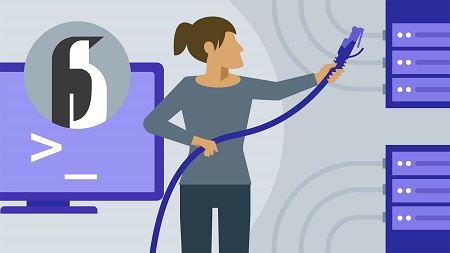
English | MP4 | AVC 1280×720 | AAC 48KHz 2ch | 4h 08m | 934 MB
Linux is a critical skill for network engineers. Many network operating systems use Linux, as do software-defined networking and DevOps tools such as OpenDaylight and Git. Don’t get left behind. This course teaches Linux from the networking perspective, providing practical, hands-on lessons that are grounded in the fundamentals that network engineers need most. Learn Linux commands for interacting with the CLI. Find out how to configure Linux networking, create users, and assign permissions. Then discover how to build different types of virtual machines, including Ubuntu desktop and server VMs. Instructor David Bombal also helps you choose a Linux distribution and text editor, and then dives deeper into fundamental topics: file systems and the directory hierarchy; editing files and file-level permissions; and managing permissions and processes. Continue to Part 2 of the training series to learn more about setting up Linux services and software-defined networking.
Note: This course uses GNS3 for all demonstrations.
Topics include:
- Linux commands
- Linux networks
- Linux prompt basics
- Linux file systems
- Editing, copying, moving, and deleting files
- Changing file owners and permissions
- Updating users, groups, and passwords
- Managing processes from the command line
Table of Contents
Introduction
1 Welcome
Why Should You Learn Linux
2 Linux network operating system shells Cisco and others
3 Linux network operating systems NOS
4 Cisco IOS Linux commands part 1
5 Cisco IOS Linux commands part 2
6 It s just a CLI
7 Rise of the machines
GNS3 Linux Networks
8 DHCP server
9 DHCP client
10 Network address translation NAT and internet testing
11 Static Linux Docker container PC
12 Network testing
13 Ubuntu Desktop QEMU virtual machine
14 Ubuntu Server download and VMware import
15 Ubuntu Server installation
16 Integrate Ubuntu Server virtual machine
17 Ubuntu Server – Manual IP address
Linux Fundamentals – Which Linux Distro
18 Which Linux distro should you learn
19 Red Hat CentOS and Fedora
20 Debian Ubuntu and Mint
Linux Fundamentals – Text Editors
21 Why text editors
22 nano and vi introduction
23 vi shortcuts and why learn vi
24 nano overview and shortcuts
Linux Fundamentals
25 Root = power
26 Linux prompt basics
27 Get help and version determination
28 Fix GNS3 issue
29 ifconfig deprecated
Linux Fundamentals – File Systems
30 File systems
31 Tree and directories
32 Linux directory hierarchy part 1
33 Linux directory hierarchy part 2
34 Linux directory hierarchy part 3
Linux Fundamentals – Files Tools Owners and Permissions
35 ls help man grep more and less
36 Owners groups and permissions
37 Owners and groups example
38 Linux is about choice – cat less and more
Linux Fundamentals – Copy Move and Delete
39 Copy move and delete part 1
40 Copy move and delete part 2
41 Never do this
Linux Fundamentals – Users Groups and Passwords
42 Introduction
43 Why
44 Shells home directories and groups
45 Bash home directories and permissions
46 Add users
47 Modify users
48 Groups
49 Passwords
50 Password settings
Linux Fundamentals – Permissions
51 Linux permissions part 1 – Introduction
52 Linux permissions part 2
53 Linux permissions part 3
54 Linux permissions part 4 – Absolute permissions
55 Linux permissions part 5 – Relative permissions
Processes
56 Linux processes part 1
57 Linux processes part 2
Resolve the captcha to access the links!